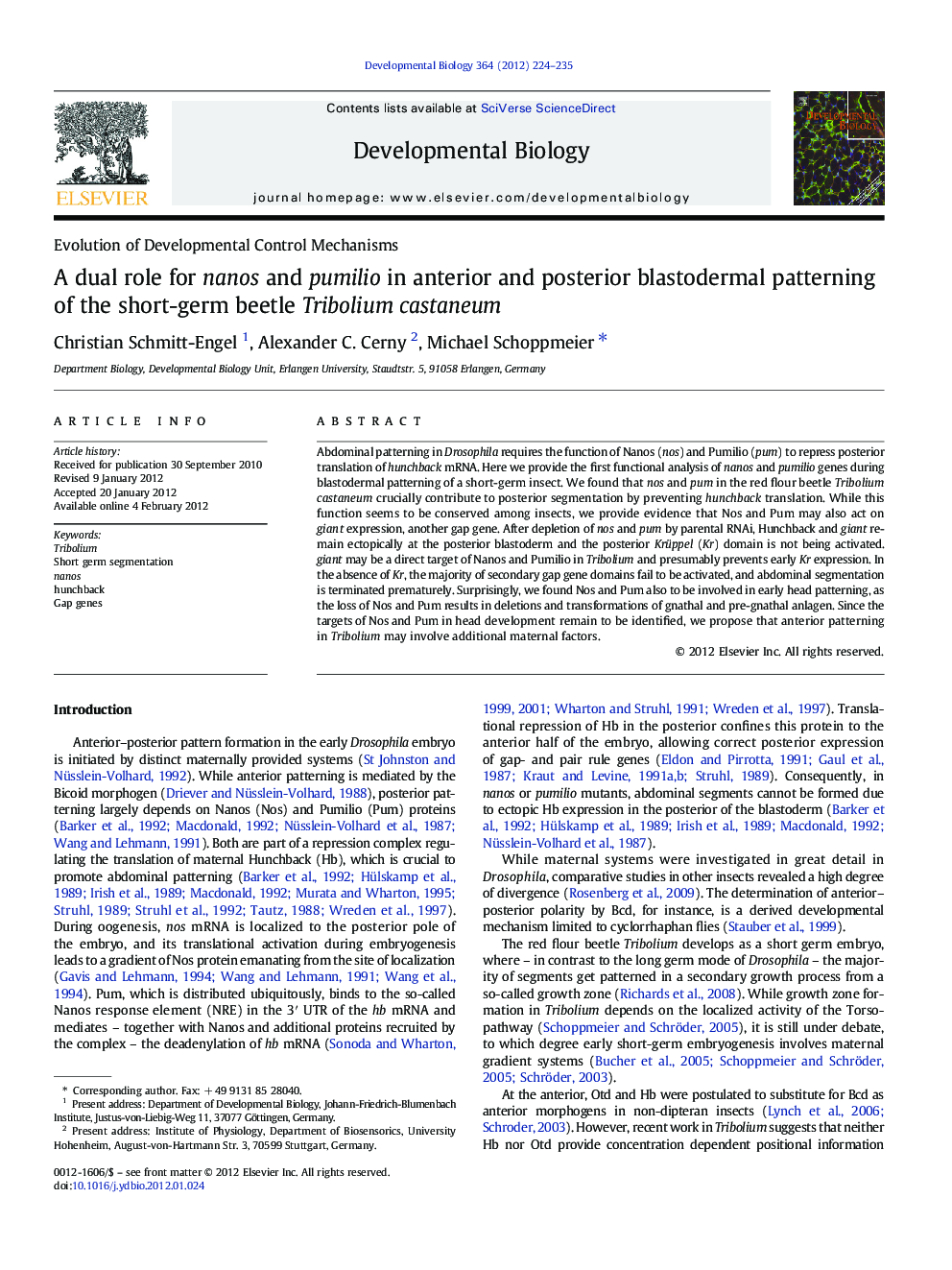| Article ID | Journal | Published Year | Pages | File Type |
|---|---|---|---|---|
| 2173322 | Developmental Biology | 2012 | 12 Pages |
Abdominal patterning in Drosophila requires the function of Nanos (nos) and Pumilio (pum) to repress posterior translation of hunchback mRNA. Here we provide the first functional analysis of nanos and pumilio genes during blastodermal patterning of a short-germ insect. We found that nos and pum in the red flour beetle Tribolium castaneum crucially contribute to posterior segmentation by preventing hunchback translation. While this function seems to be conserved among insects, we provide evidence that Nos and Pum may also act on giant expression, another gap gene. After depletion of nos and pum by parental RNAi, Hunchback and giant remain ectopically at the posterior blastoderm and the posterior Krüppel (Kr) domain is not being activated. giant may be a direct target of Nanos and Pumilio in Tribolium and presumably prevents early Kr expression. In the absence of Kr, the majority of secondary gap gene domains fail to be activated, and abdominal segmentation is terminated prematurely. Surprisingly, we found Nos and Pum also to be involved in early head patterning, as the loss of Nos and Pum results in deletions and transformations of gnathal and pre-gnathal anlagen. Since the targets of Nos and Pum in head development remain to be identified, we propose that anterior patterning in Tribolium may involve additional maternal factors.
► Tribolium Nanos and Pumilio are required for abdominal segmentation. ► Tribolium Nos and Pum have conserved functions in Hunchback translational regulation. ► Tribolium nos and pum RNAi also have impact on posterior giant expression. ► Prolonged gt expression prevents the formations of posterior gap-gene domains.
